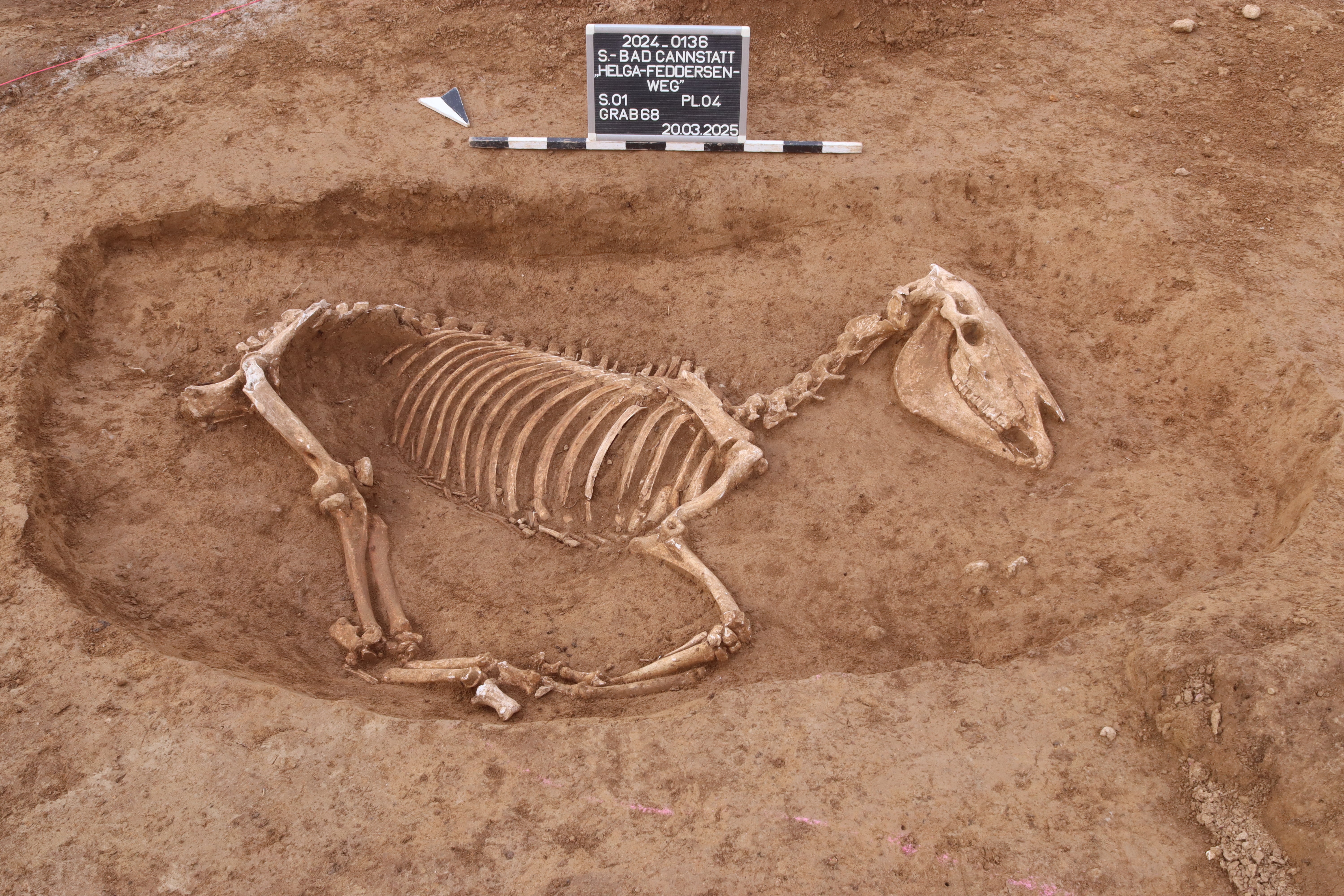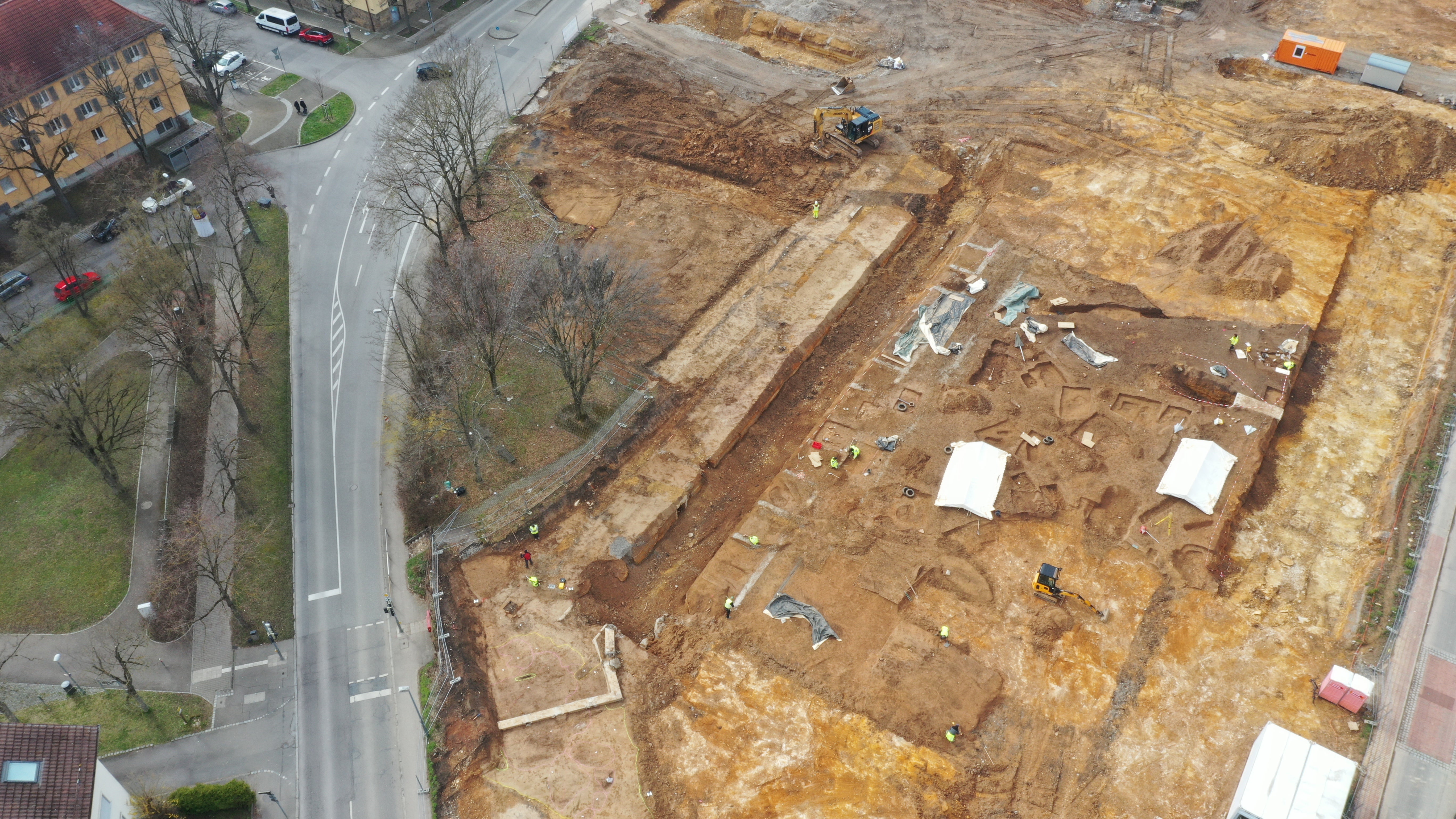Archaeologists have unearthed a “very rare” Roman-era horse cemetery in Germany containing the skeletons of over a hundred horses and that of a strange man buried in a prone position.
The “sensational find” in Stuttgart sheds unique insights into the use of horses by the Roman army, according to the German State Office for Monument Preservation (LAD).
These buried horses were part of a second-century AD Roman cavalry unit known as Ala, which was larger than normal legions with over 5,400 or 5,100 men active in what is now southwest Germany.
During its heyday, the region was one of the most important Roman military sites, likely home to a population of over 700 horses, researchers say.

Excavation in this part of Stuttgart’s borough of Bad Cannstatt has been ongoing since July 2024, bringing to light more than 100 horse skeletons.
Radiocarbon dating of the bones suggests the horses likely lived during the 2nd century.
“Due to the archaeological and historical knowledge of the Roman Bad Cannstatt, the horses of the equestrian unit – a so-called ‘Ala’ – can be assigned, which was stationed on the Hallschlag from about 100 to 150 AD,” archaeologist Sarah Roth from LAD said in a translated statement.
“The troop with almost 500 riders probably had a total horseback of at least 700 animals and losses had to be constantly replaced,” Dr Roth said.
Whenever a horse part of the cavalry died, it would be buried about 400m away from the equestrian castle and at a distance of 200m from the civil settlement, researchers say.
The horse carcasses were moved on sledges individually into shallow pits and buried lying on their sides with outstretched or bent legs.

Despite the cemetery having a partly dense occupation, there seemed to be only a few overlaps of the pit, indicating the pits were likely marked above ground.
“The horses do not all seem to have died at the same time in a major event such as a battle or epidemic,” Dr Roth said.
Instead, there’s evidence of the animals either dying during the presence of the cavalry due to isolated cases of illness, injury, or other reasons, researchers say.
Most animals seem to have been disposed of rather than buried, however, with some exceptions.
One of the horses was found buried with two jugs and a small oil lamp placed in the corner of its pit.
“Here we see a particularly close connection of the owner to his horse. Even after about 1800 years, the grief over the death of this one animal is still apparent,” Dr Roth said.
The exact size of the entire cemetery remains unclear, researchers say.
Archaeologists also uncovered the skeleton of a Roman-era man in the cemetery, buried on his stomach and without grave goods, suggesting he was likely an outsider who wasn’t held in high esteem.











